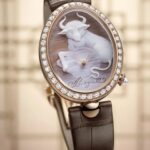
June’s birthstone is the pearl, a must-have in every woman’s jewelry box. With the recent pearl craze, from celebrity showcases to live-streaming pearl openings, it seems every girl has suddenly become a pearl expert. However, round pearls can easily lead to matching outfits. So how can you wear these gentle and elegant pearls with personality and style?
Today, we’ll introduce you to a less common player in the pearl world – baroque pearls. We guarantee that each one is unique, allowing you to effortlessly nail the cool pearl style!
What are baroque pearls? The term “baroque” comes from the Portuguese word “barocco,” meaning “imperfect.” Its use as a jewelry term can be traced back to a French dictionary from the late 17th century, describing pearls with imperfect (non-round) shapes.

The vast majority of natural pearls are baroque pearls. This is because the pearl formation process doesn’t always occur in soft tissue. Some pearls get stuck in muscle tissue, where they grow into irregular, imperfect shapes due to the resistance of surrounding muscles. This is why round pearls are rarer, but it doesn’t mean baroque pearls are less valuable! In fact, most record-breaking pearls at auctions are baroque pearls.

Pear-shaped natural pearls measuring 5.2 cm in height
Christie’s Geneva, May 2024
Sold for: 207,900 Swiss francs
The Rise to Fame of Baroque Pearls
Baroque pearls were highly popular during the Renaissance. At that time, pearls were scarce resources, with perfectly round ones even rarer, leaving people with limited choices. In Johannes Vermeer’s 17th-century painting “Girl with a Pearl Earring,” the subject wears an earring set with a baroque pearl.

“Girl with a Pearl Earring”
Depicts a girl wearing a large baroque pearl earring
The world’s most famous baroque pearl, “La Peregrina,” also dates from this period. Discovered in Panama in the 16th century, it’s a 50.56-carat pear-shaped baroque pearl. It passed through several royal treasuries before being acquired by Elizabeth Taylor. After her death, it set a pearl auction record of $11.84 million.

From Elizabeth Taylor’s collection
“La Peregrina” pearl measures approximately 17.35 – 17.90 x 25.50 mm
Christie’s New York, December 2011
Estimated price: $2,000,000 – $3,000,000
Sold for: $11,842,500
“La Peregrina” was designed by Cartier as a pendant on a pearl, diamond, and ruby necklace. Although the necklace also featured 57 perfectly round natural saltwater pearls, it was the legendary “La Peregrina” baroque pearl that broke two auction records at the time.

In the 19th century, Victorian jewelers discovered the unique and natural beauty of baroque pearls, developing a distinctive use for them – creating small statues where pearls were used as body parts.
The best example is a piece in the V&A Museum collection called The Canning Jewel. This pendant features a large baroque pearl as the mermaid’s body, surrounded by other colorful gemstones. It’s said to have been a gift from the Medici family to the Mughal Emperor of India, later acquired by the Earl of Canning, the first Governor-General of India, hence its name.
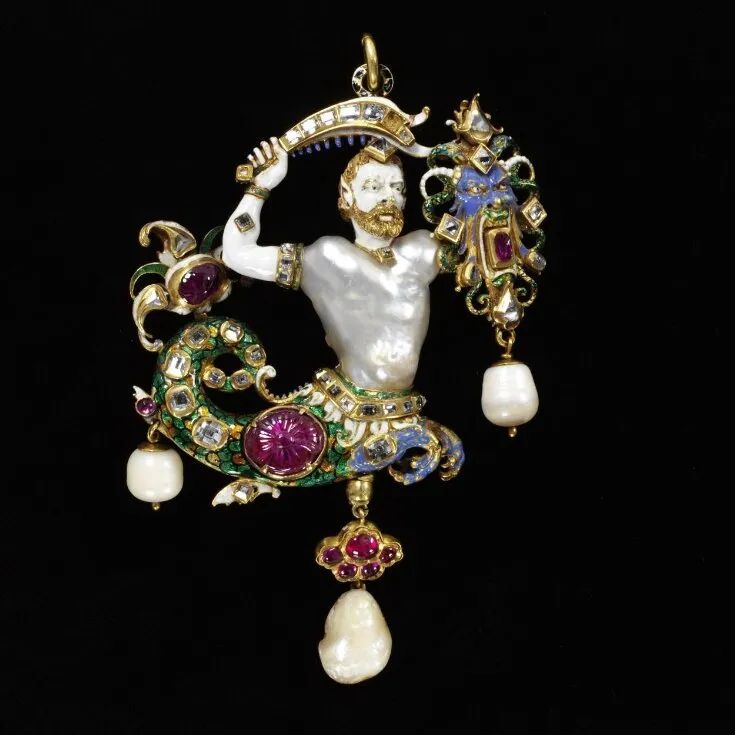
Before Mikimoto invented the technique for cultivating saltwater pearls in the early 20th century, the jewelry world used only natural pearls. Among these, pear-shaped baroque pearls were the most popular, becoming essential treasures in many royal jewelry collections.
For instance, Marie Antoinette’s natural pearl and diamond pendant, which currently holds the record for the most expensive pearl, is the best representation of baroque pearls.

Before facing the guillotine, Queen Marie Antoinette of France managed to smuggle part of her jewelry collection back to Vienna, entrusting it to her cousin, Emperor Franz II of Austria. It was later passed to her only surviving daughter, Marie Thérèse. The collection included a natural pear-shaped pearl pendant, which remained in the Bourbon-Parma family for nearly 200 years.
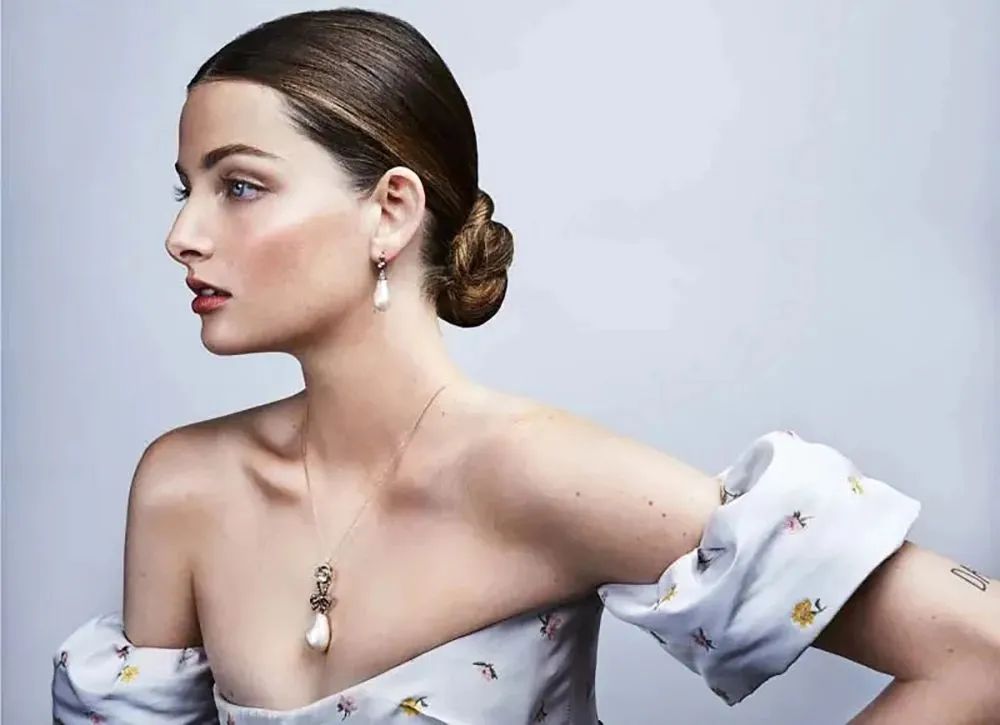
The pendant was first auctioned by Sotheby’s in 2018, selling for about $40.6 million, becoming the most expensive pearl ever sold. This pearl isn’t a standard pear shape. Compared to the “La Peregrina” pearl, it’s similar in size but less perfect in shape. It’s paired with only a 3.40-carat diamond, unlike “La Peregrina” which was auctioned as part of an entire necklace. Yet, it sold for nearly three times the price.
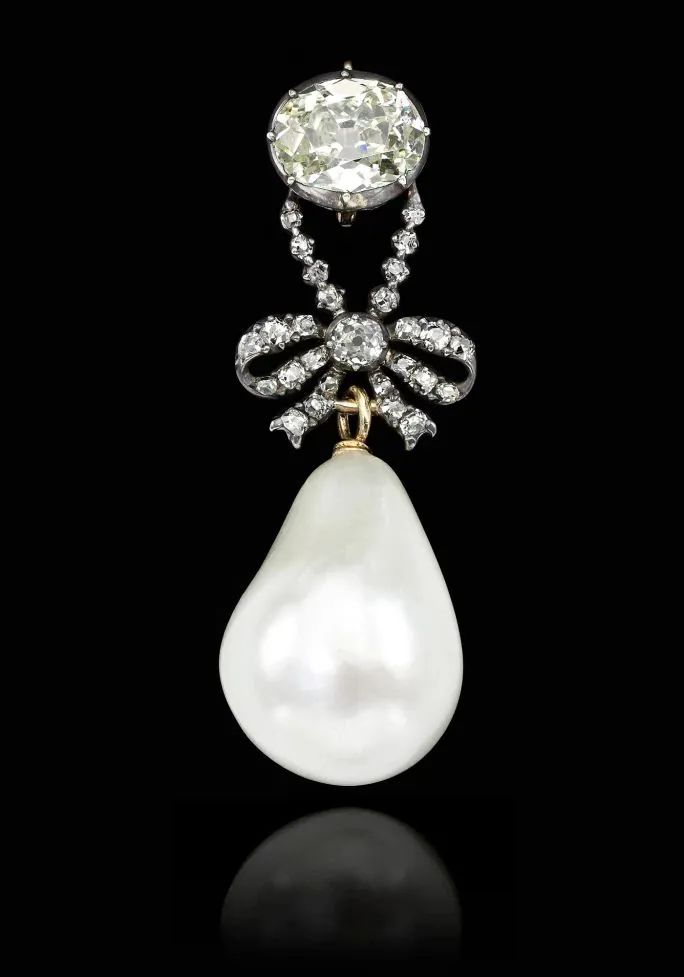
Pearl size: approximately 15.90 – 18.35 x 25.85 mm
Sotheby’s Geneva, November 2018
Estimated price: 1,000,000 – 1,990,000 Swiss francs
Sold for: 36,427,000 Swiss francs
How to Choose Baroque Pearls?
With the recent pearl craze, baroque pearls have gained recognition and acceptance, becoming a choice for young people seeking individuality. The prices of baroque pearls vary widely, leading many to mistakenly believe that baroque pearls are always cheaper than round pearls. This is only partially correct.
Generally, among pearls of the same category, baroque pearls are indeed cheaper than round pearls. However, baroque pearls are just a classification based on shape, and they have their own subcategories. Remember, the current record holder for the most expensive pearl at auction is a baroque pearl.
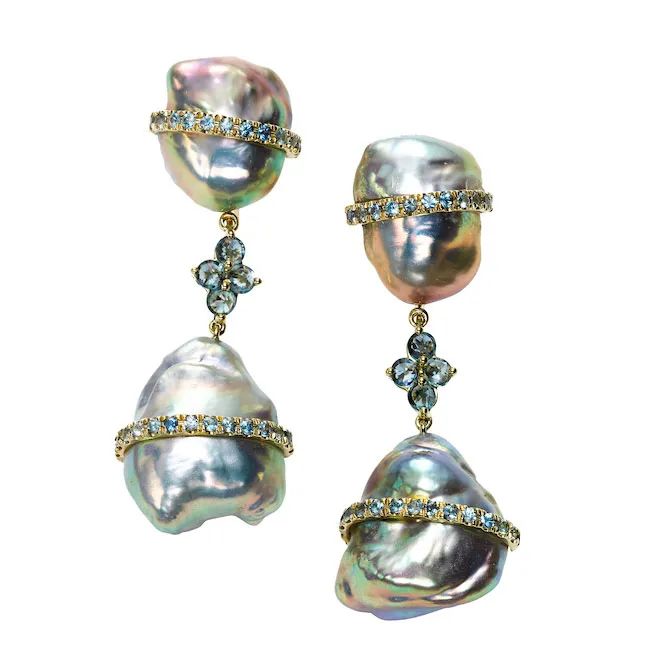
When considering baroque pearls, it’s important to understand their detailed classification and evaluation criteria. The most valuable are natural baroque pearls, which are extremely rare and now almost only seen at auctions.
Natural pearls are the pinnacle of pearl collecting. Interestingly, round natural pearls usually appear as pearl strands but often don’t fetch as high prices as single baroque natural pearls. Why? Because of size. While natural round pearls are rare, they’re often smaller than the baroque natural pearls that enter auctions as single pieces.
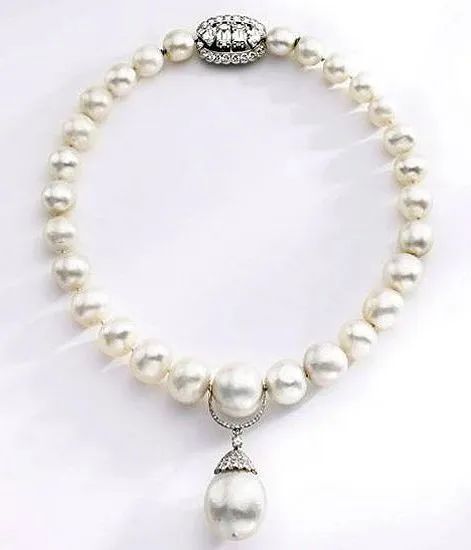
28 round natural South Sea pearls from Queen Mary’s collection
Natural baroque pearl pendant added later by the Duchess of Windsor
Christie’s, December 2007
Sold for: $4.8 million
Some pearl varieties that can’t be cultured, like conch pearls and abalone pearls, are almost always baroque. They’re only near-round, with perfectly round ones being extremely rare. For these pearls, value is determined by size – larger ones are rarer. Near-round or near-pear shapes are also more precious and valuable.

Natural abalone pearl, weighing 470 carats
Valued at $4.7 million in 1991
Listed in the Guinness World Records as the largest abalone pearl at the time
Most pearls seen in the market today are cultured pearls. Among these, baroque pearls used in high-end jewelry are mostly cultured saltwater pearls, with South Sea and Tahitian pearls being the highest quality. While not as expensive as round pearls, they boast high luster, few blemishes, and unique shapes, making them favorites among independent jewelry designers.
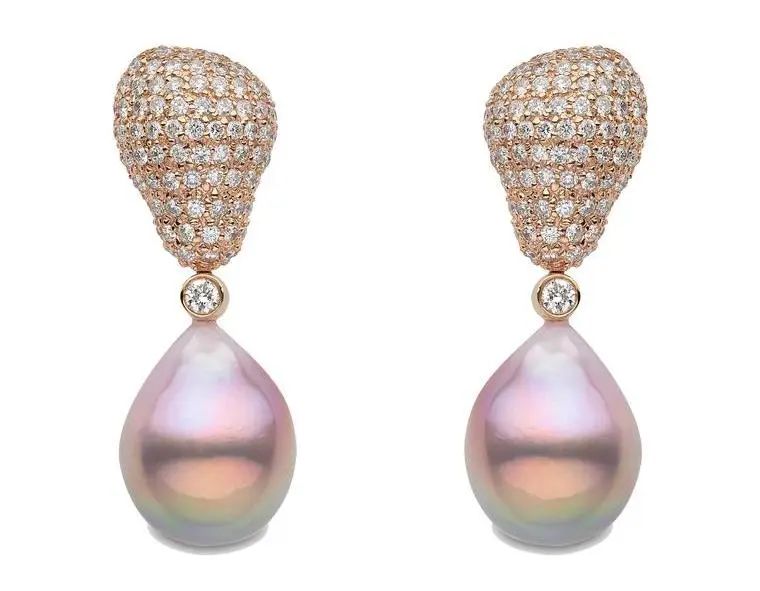
Cultured freshwater baroque pearls are more affordable. Over 90% of freshwater pearls are actually baroque, offering budget-friendly prices and diverse designs, making them ideal for everyday styling.
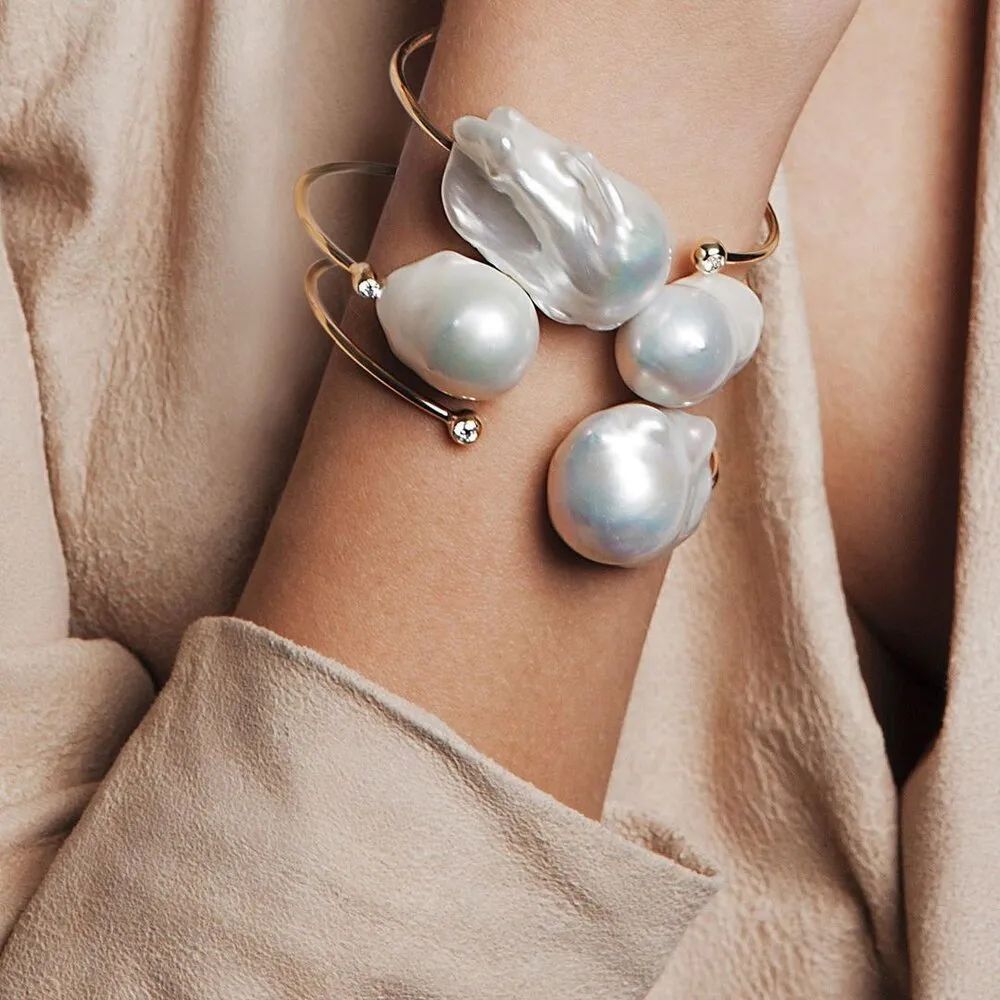
Besides classification by pearl type, baroque pearls can be roughly divided into 12 shapes. Which is the easiest to wear? Which has the most unique style?
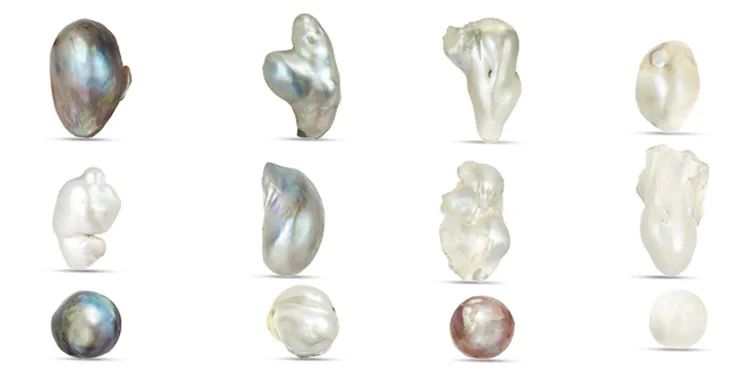
The most wearable is undoubtedly the drop shape, a common shape for gemstone cuts. These baroque pearls are basically symmetrical, just not as smooth as cut gemstones. They’re often designed as pendants, appearing in earrings, brooches, and necklaces.
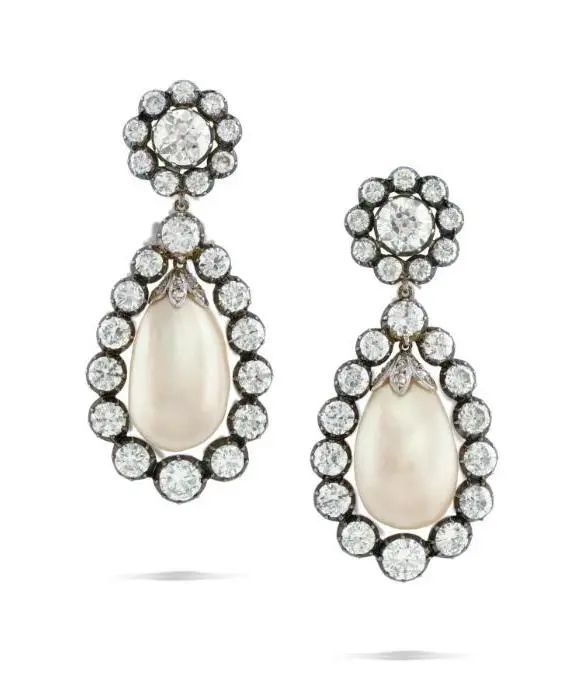
Christie’s Geneva, May 2024
Sold for: 201,600 Swiss francs
However, the best stage for drop-shaped pearls might be tiaras. Many royal jewelry collections feature pearl tiaras, with those set with drop-shaped pearls being particularly impressive, as they’re undoubtedly larger and more eye-catching than round pearls.
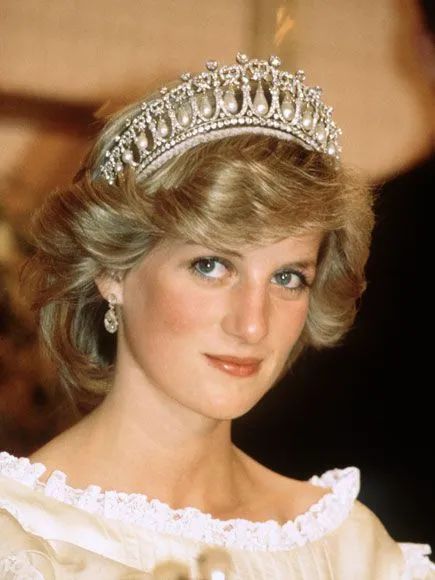

Semi-baroque pearls, also known as potato or egg-shaped baroque, are frequently used in jewelry design. They’re typically oval or semi-pear-shaped, with irregularities usually at one end and a more uneven surface. They’re often worn as pearl strands, with designers incorporating their shapes into their designs.
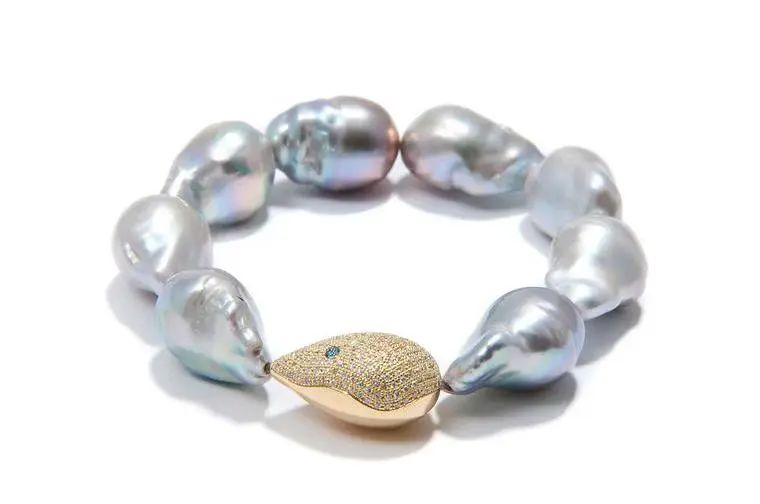
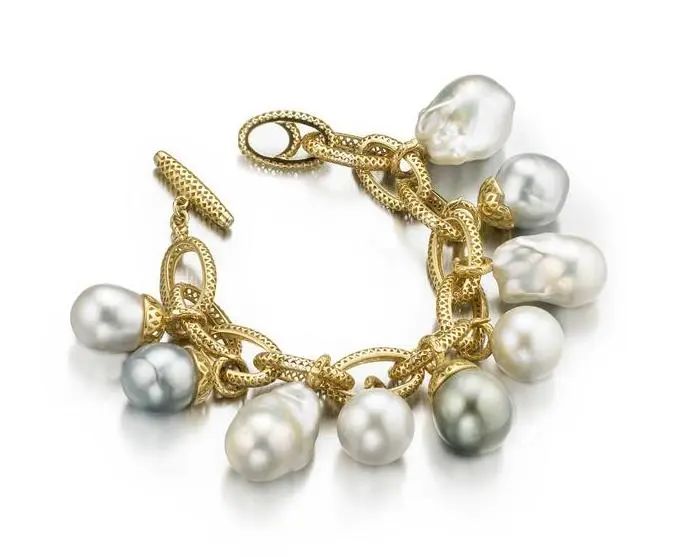
A currently trending style combines these pearls with metal designs, creating a more rugged, natural look that makes a bold statement. It’s a must-have for popular Instagram influencers’ styling.
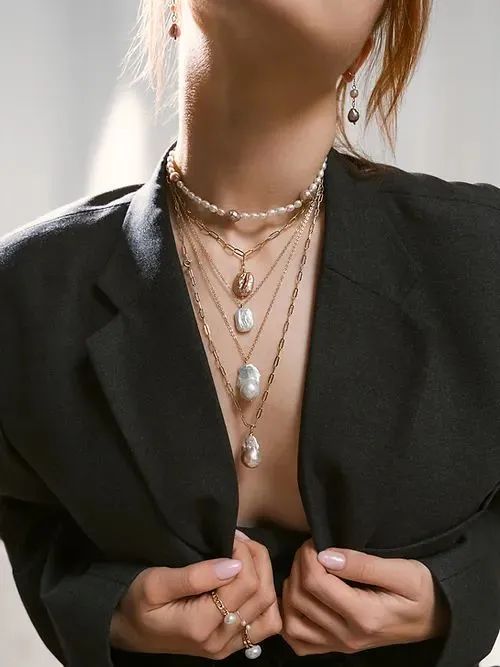

Button, petal, and stick-shaped baroque pearls are also very fashionable choices. These flat, nucleusless pearls are easily crafted into three-dimensional floral designs, emphasizing combination wear.
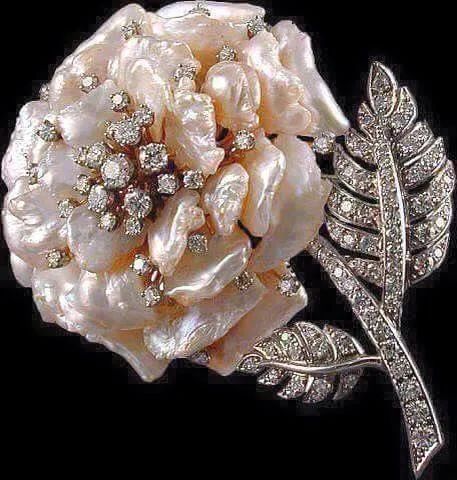
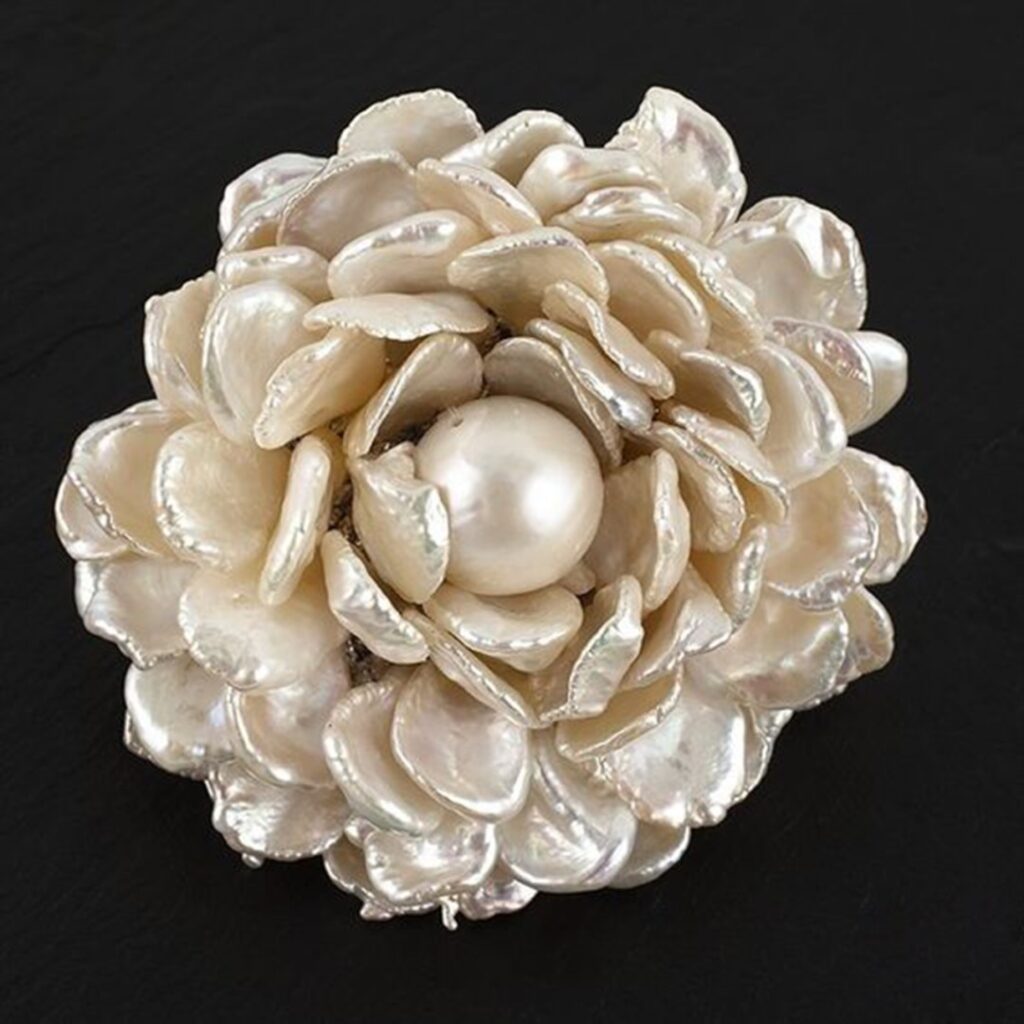
In fact, as early as the early 20th century, Tiffany‘s jewelry master Paulding Farnham discovered this use of pearls, utilizing irregular stick-shaped pearls to create elegant chrysanthemum brooches that perfectly mimicked the slender, curved petals of chrysanthemums.
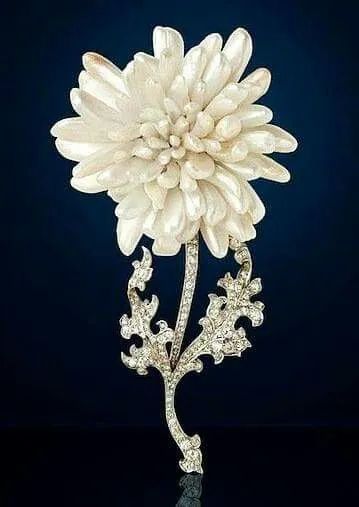
Chrysanthemum brooch
Keshi pearls are also common baroque pearls. They are nucleusless, meaning they’re 100% nacre, resulting in better luster. They typically have irregular ovoid shapes and come in different colors depending on the oyster species. However, large-sized Keshi pearls are rare.
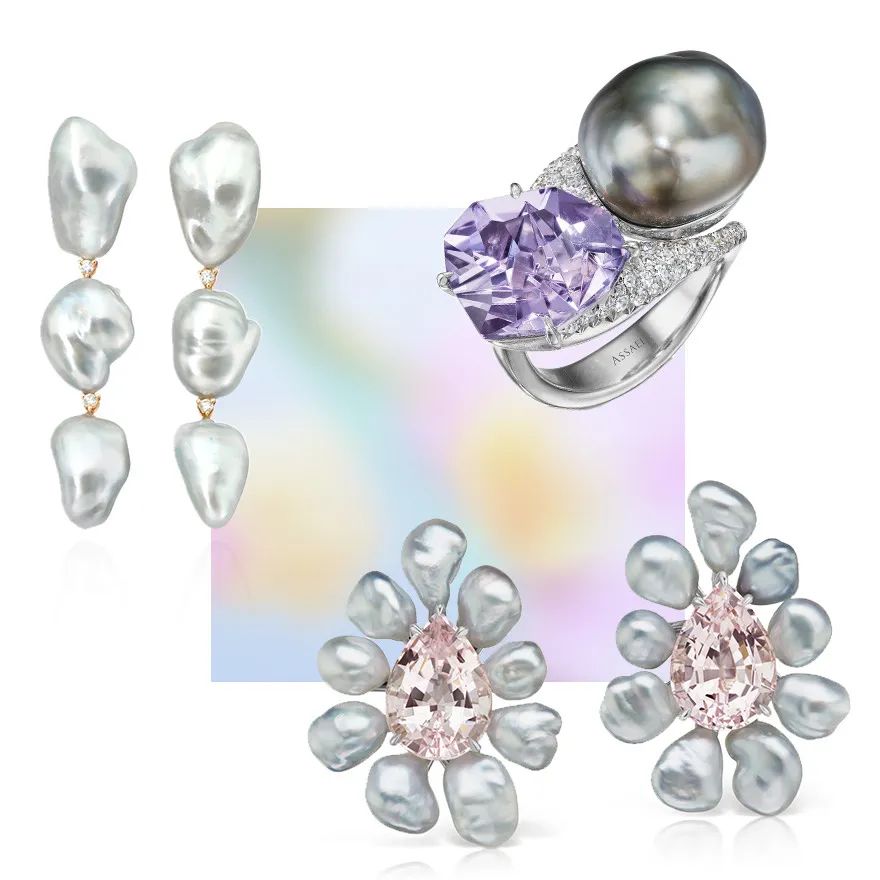
Assael Keshi pearl and diamond earrings
Assael Tahitian Keshi pearl, amethyst, and diamond ring
Assael morganite Keshi earrings
Another popular type of baroque pearl is the Seed pearl, also known as “rice pearl” or “Baby pearl.” Popular in the Victorian era for showcasing exquisite craftsmanship, today they embody minimalist beauty. They’re generally used as basic pieces or for layered wear, exuding a pure, youthful feel.
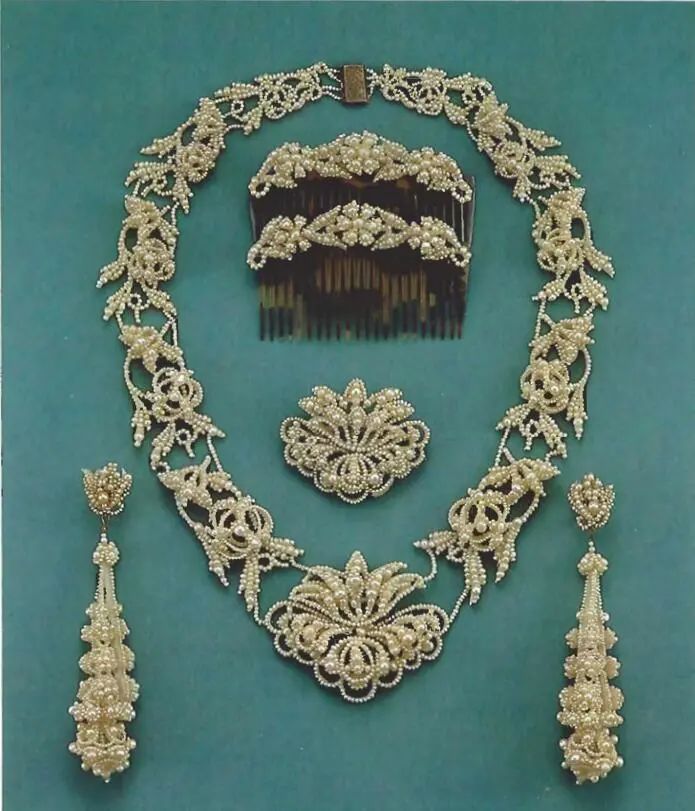
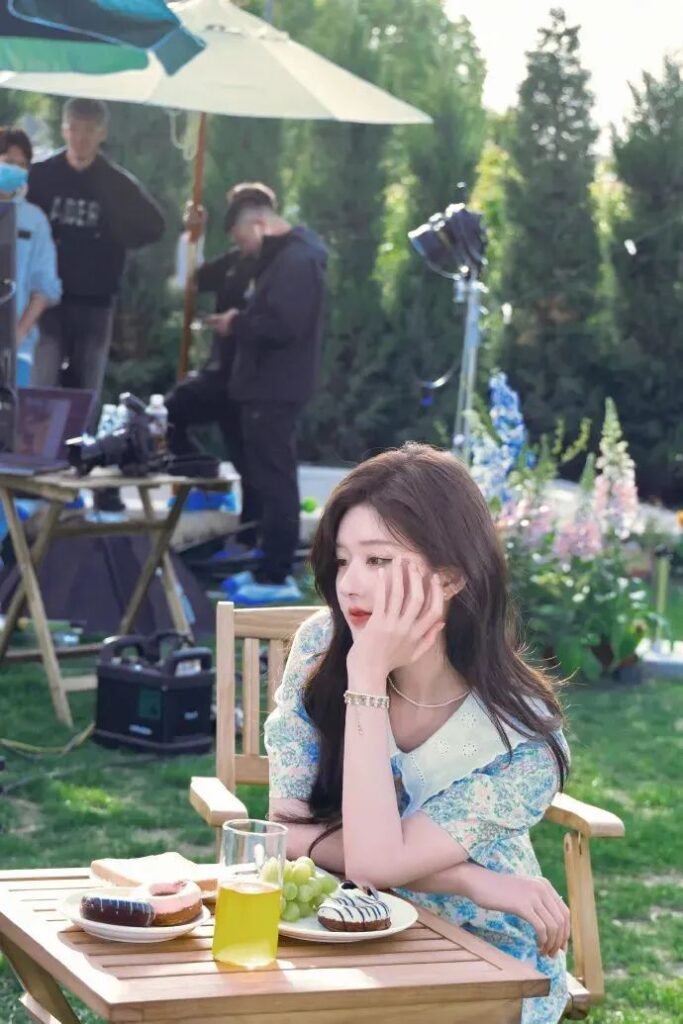
So, not all baroque pearls are “cheap.” Their value depends on variety, luster, size, and blemish level, just like round pearls. Their shape is also a factor, though the judging criteria are more subtle. For many designers, the more unique the shape of a baroque pearl, the more it inspires their creativity. Some imaginative jewelry pieces require these special “materials” to truly shine.
So, how does one choose from the popular baroque pearl jewelry? Who in the jewelry world are the masters at utilizing these unique pearls? Let me recommend a few:
Some jewelry brands focusing on pearls are undoubtedly authoritative in this field, as they possess the most pearl resources. Salvador Assael, the founder of Assael, introduced South Sea and Tahitian pearls to the North American market in the 1950s and 60s.
Both Harry Winston and Tiffany purchased pearls from him. Later, he established the South Sea Pearl Cultivation Alliance, uniting all pearl farmers to promote pearls. He also introduced cultivation techniques from Japan and established pearl farming bases in Tahiti, becoming the premier pearl supplier in North America.
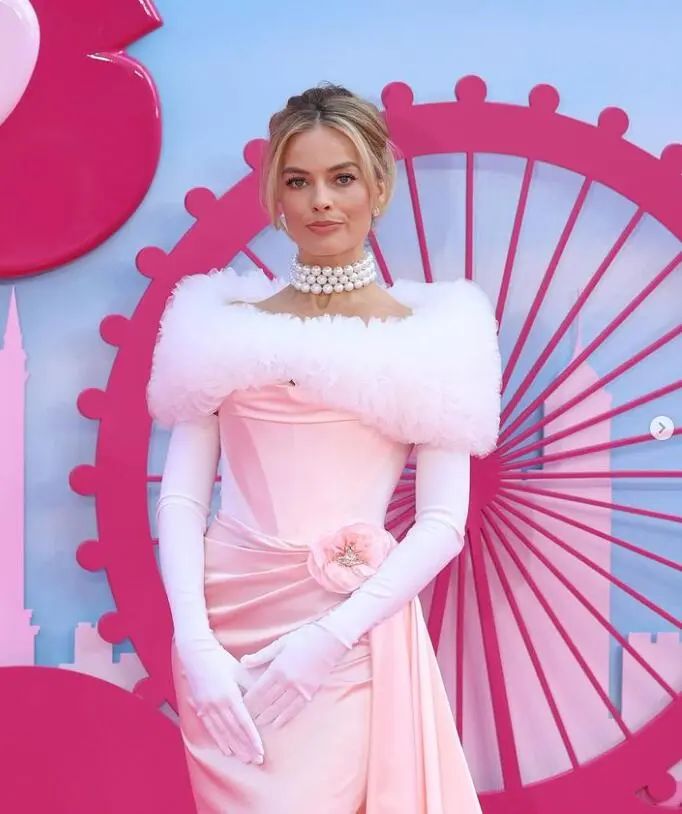
South Sea and Tahitian pearls often produce baroque pearls, and both types are relatively large, giving Assael abundant baroque pearl resources. Now, jewelry designer Peggy Grosz has become the brand’s senior vice president, infusing more creativity and style into this pearl brand, such as extensively using high-quality irregular baroque pearls in designs.
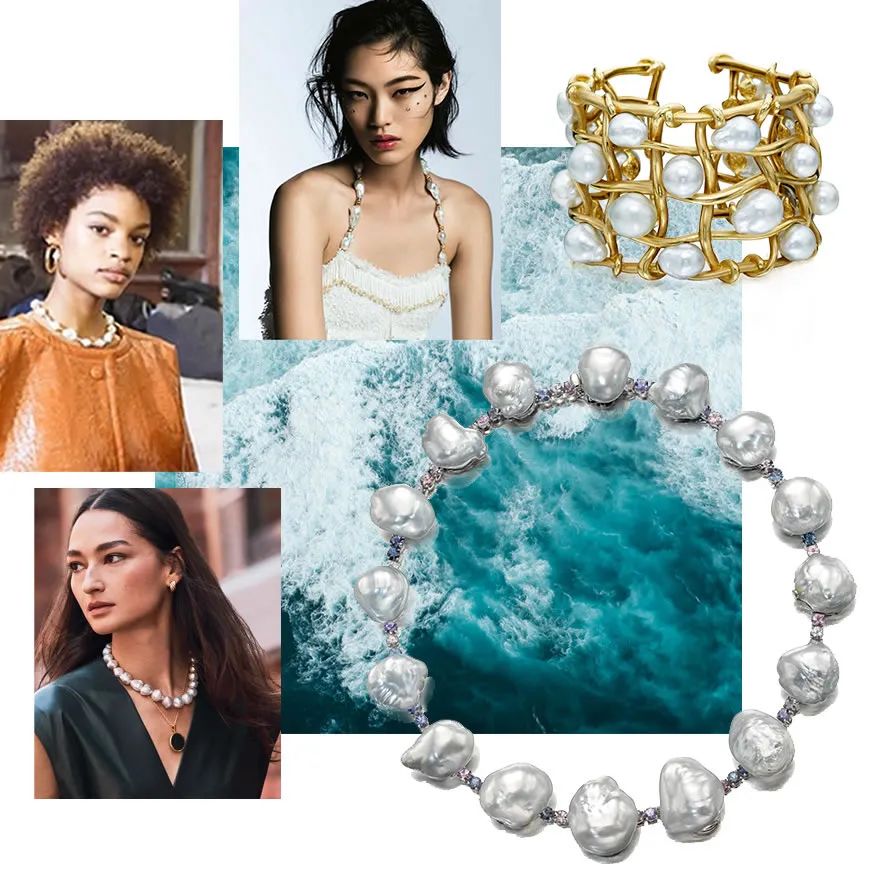
This year, their latest Nature Scapes high jewelry collection brought to the Las Vegas Couture jewelry show featured many baroque pearls combined with various niche materials, aiming to match unique colors with the distinctiveness of baroque pearls. Matrix opals with unique textures are paired with tanzanite and Tahitian baroque pearls, while specially cut moonstones are matched with Tahitian baroque pearls, achieving perfect color harmony.
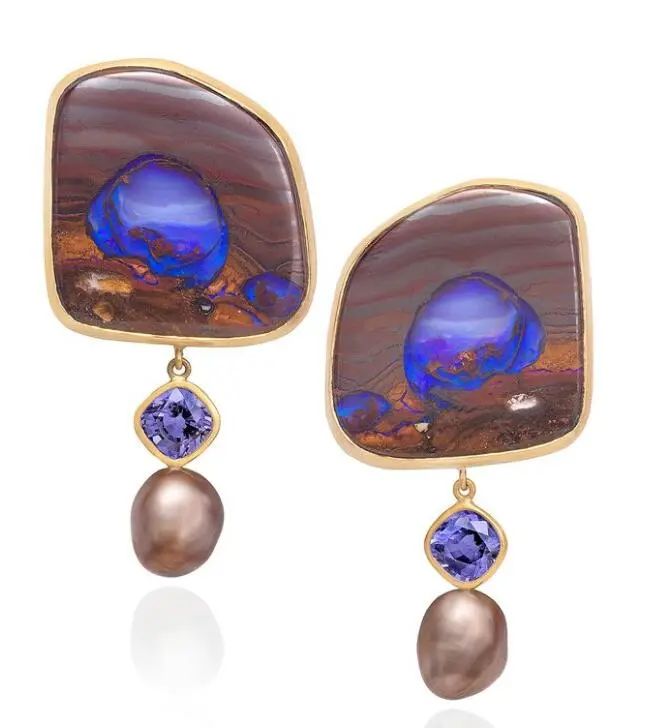
Nature Scapes collection
Port Hole earrings
Opal, tanzanite, Tahitian baroque pearls
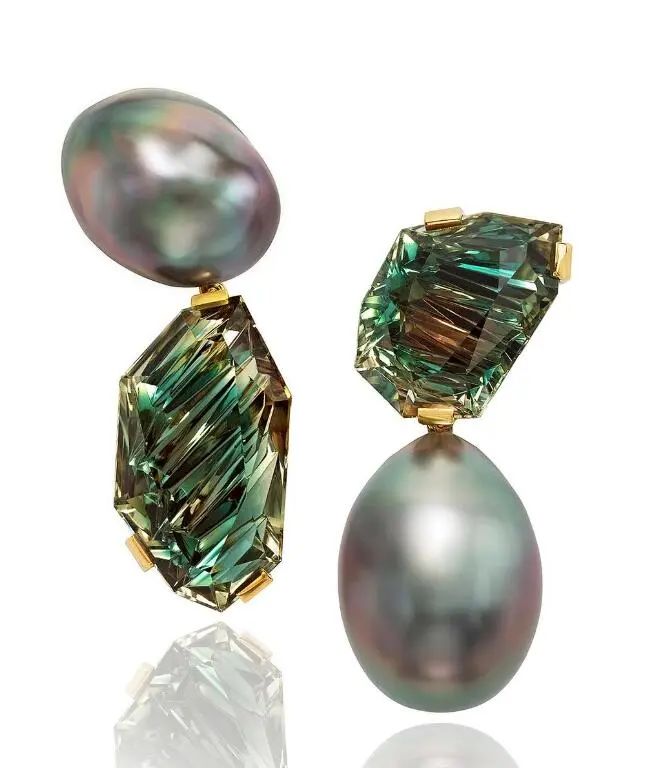
Tahitian baroque pearls, moonstone
Assael also chose very special baroque pearls, such as blister pearls that are closely integrated with the mother-of-pearl, also known as “bubble pearls.” These pearls break through the pearl sac wall during growth and enter between the shell and mantle, with the pearl layer secretion connecting them tightly to the shell.
This creates baroque pearls with even more unusual shapes. Assael polishes the shell part together and sets it as a whole, presenting unique jewelry.

Tahitian “bubble” pearl
They even combine it with other materials, such as this “shell” brooch. Discarding the outer shell, they set a rare natural orange blister pearl into agate of the same color, using the agate’s patterns to mimic the shell. They then set mother-of-pearl on the outer edge to emphasize the texture, finally bordered with coral and adorned with South Sea baroque pearls, creating a new “shell” with rich textural effects.
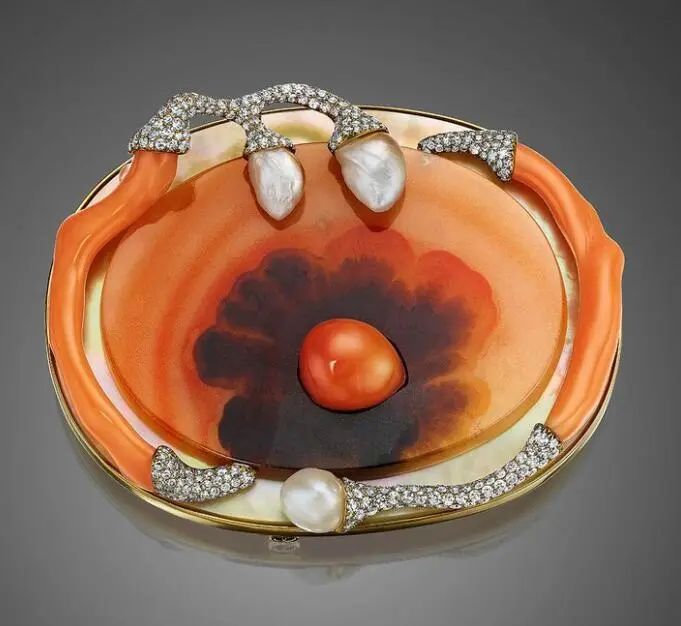
Agate, natural clam pearl, baroque pearls, coral
Diamonds, mother-of-pearl
Mikimoto, which built its reputation on cultured saltwater pearls, specializes in Akoya pearls that don’t often produce baroque shapes. However, they frequently use various types of baroque pearls in their high jewelry designs, demonstrating the brand’s ambition in the entire pearl domain.
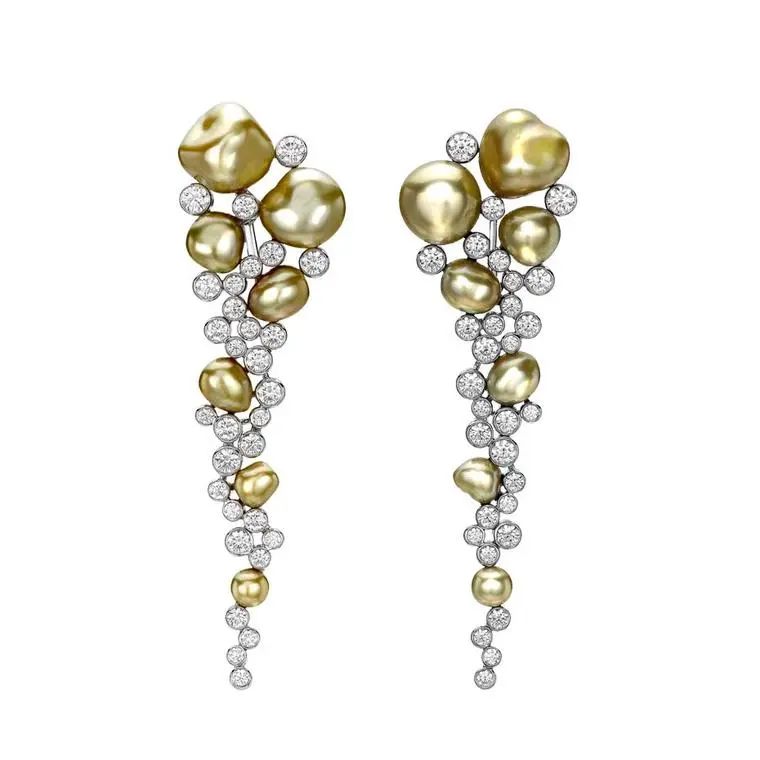
Regalia collection earrings
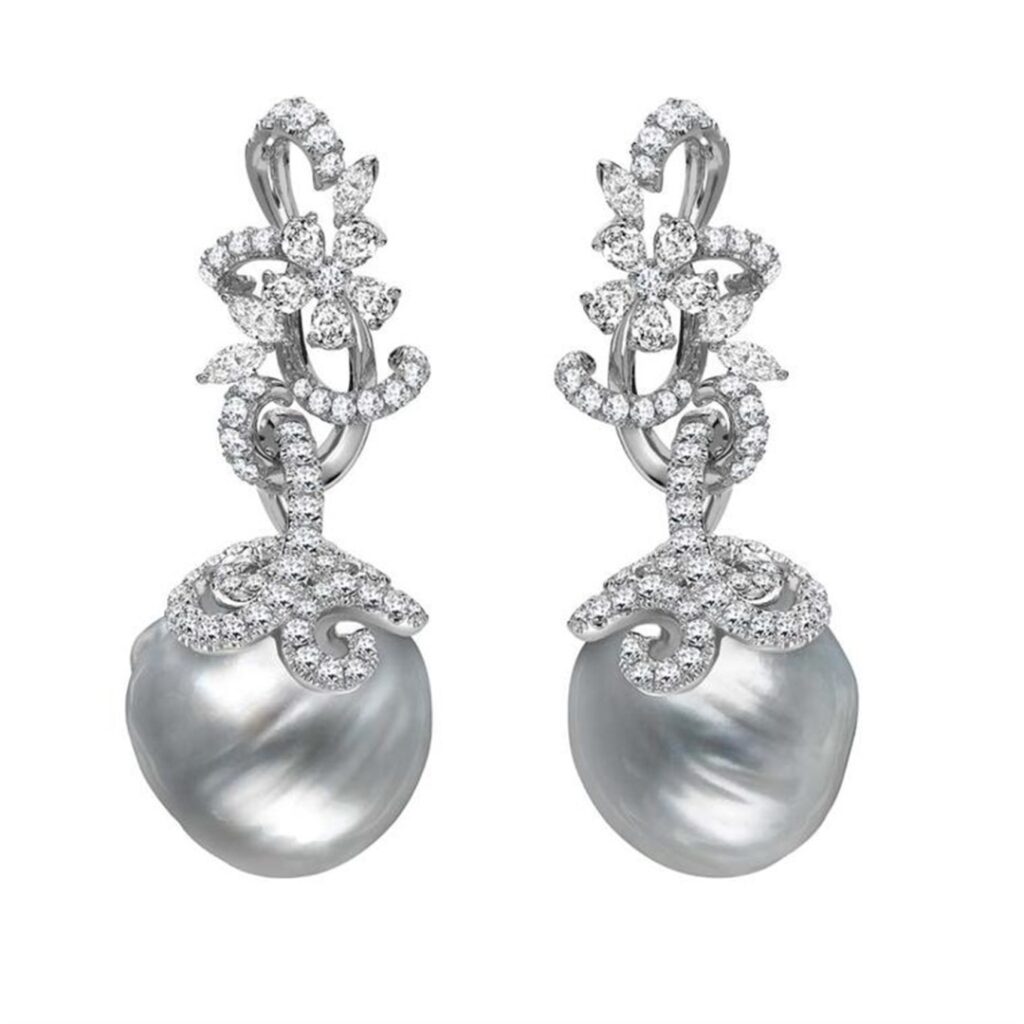
Regalia collection earrings
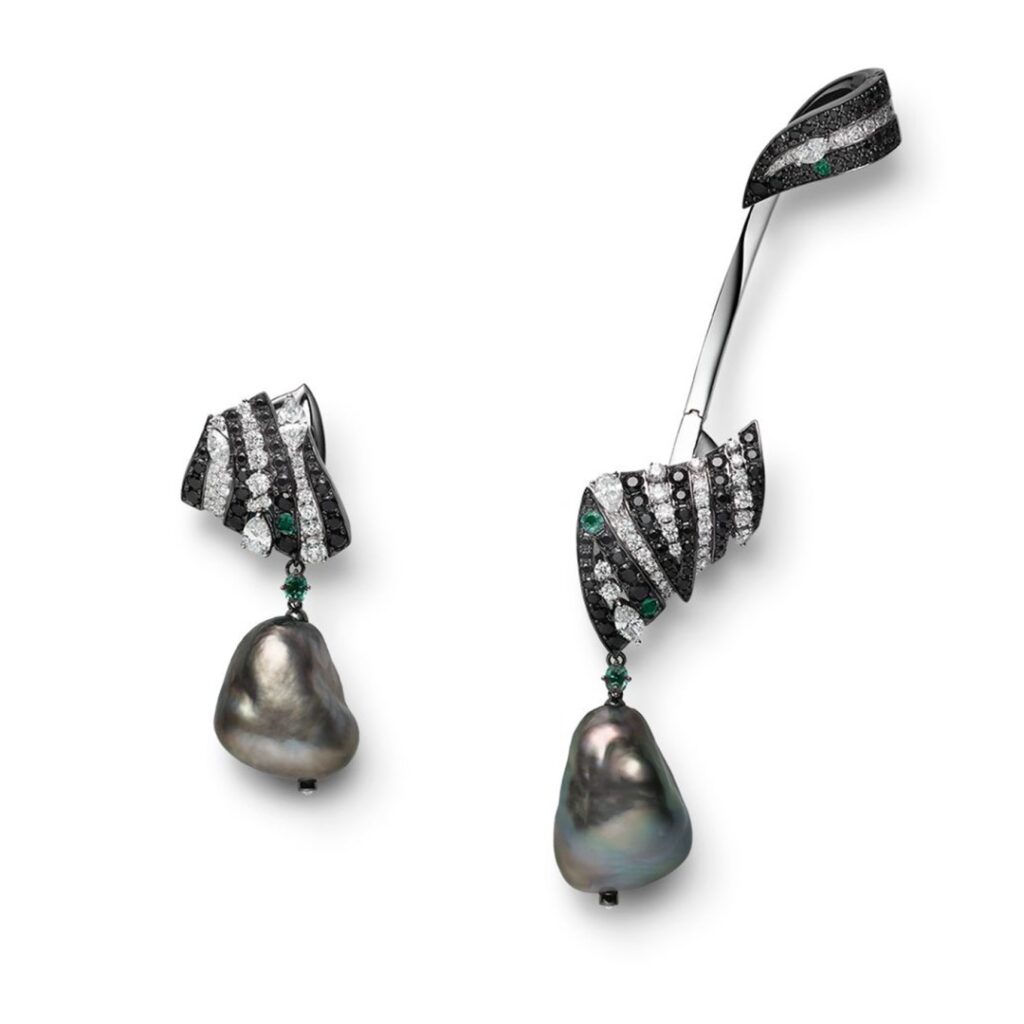
Wild and Wonderful collection earrings
In their Hyacinthia collection, freeform-cut tanzanites harmonize with South Sea baroque pearls in shape. The Midnight Sky collection pairs pavé-set sapphires with baroque pearls, creating a complementary effect. The Regalia collection outlines baroque pearl shapes with diamonds and white gold, interplaying with South Sea baroque pearls in a solid-void contrast.
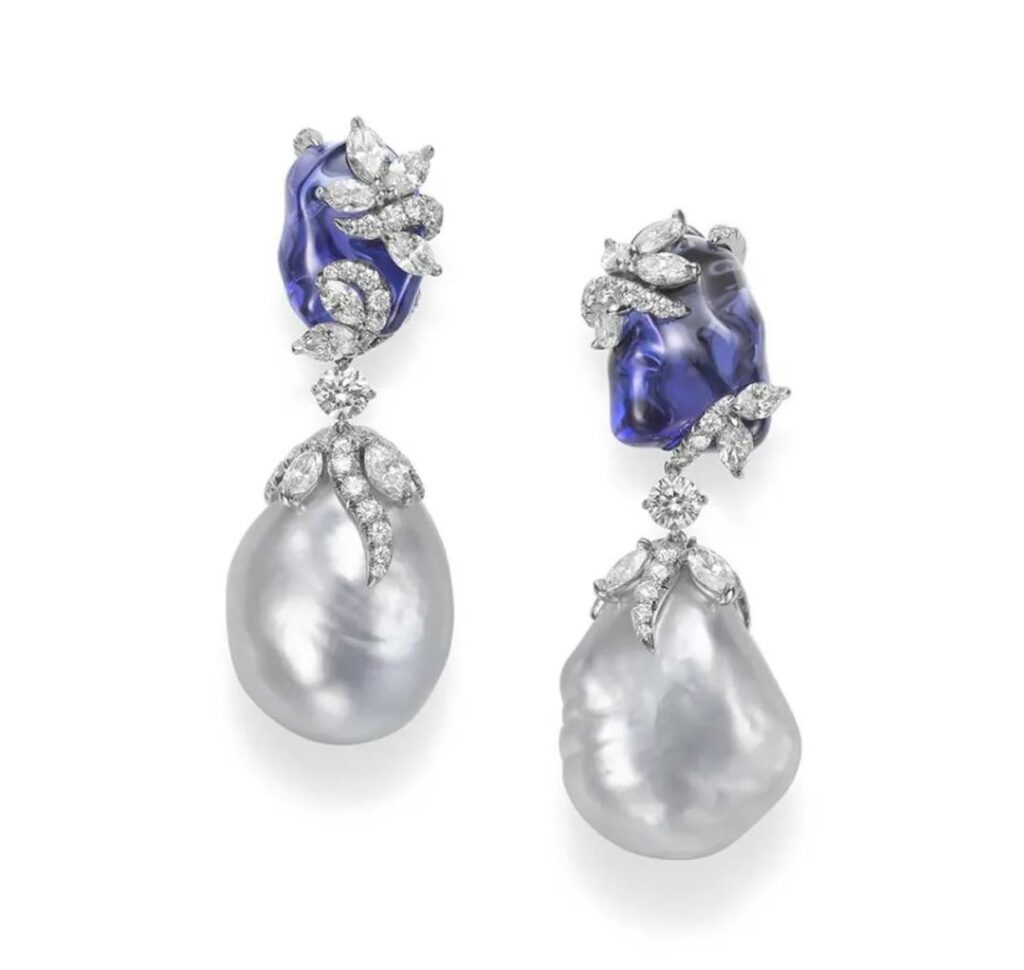
Hyacinthia earrings
South Sea baroque pearls, tanzanite, diamonds
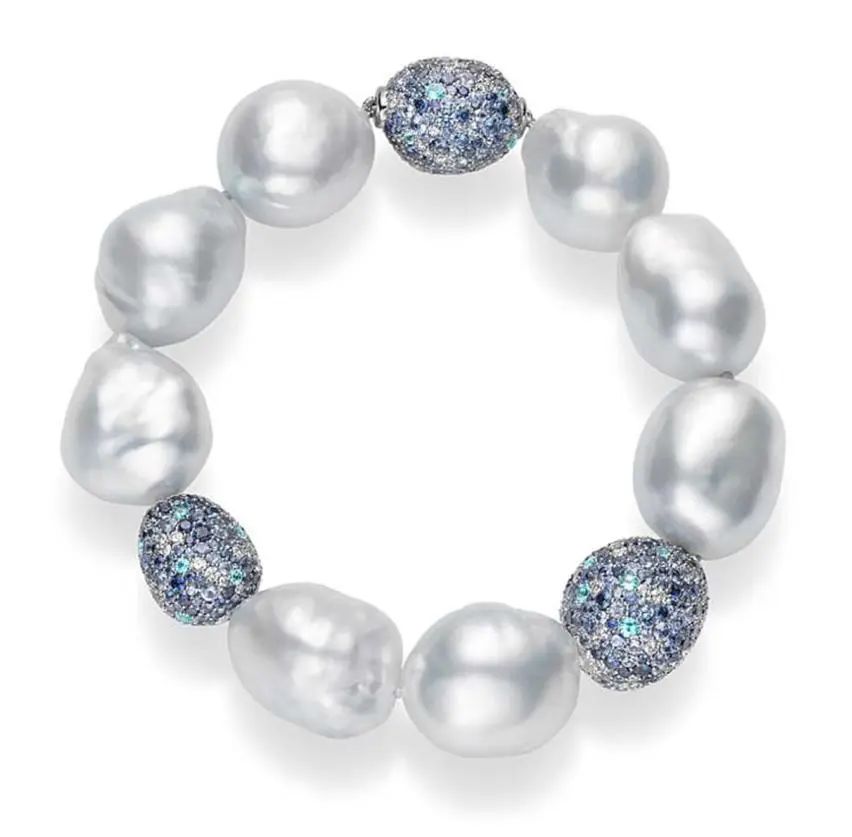
Midnight Sky pearl bracelet
South Sea baroque pearls, sapphires
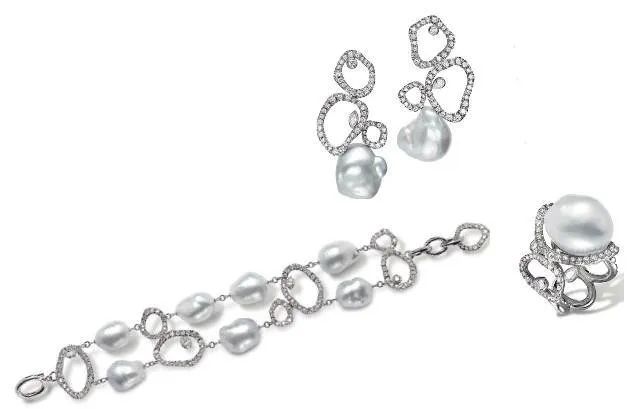
Regalia collection
South Sea baroque pearls, diamonds
Particularly impressive is Mikimoto’s choice of uniquely shaped baroque pearls in their Wild and Wonderful high jewelry collection. Inspired by the pearls’ natural forms, they created ice floes under penguins’ feet, cute patterns on deer, and the rounded bodies of seals, allowing people to easily appreciate the “double” miracle of nature’s creations.
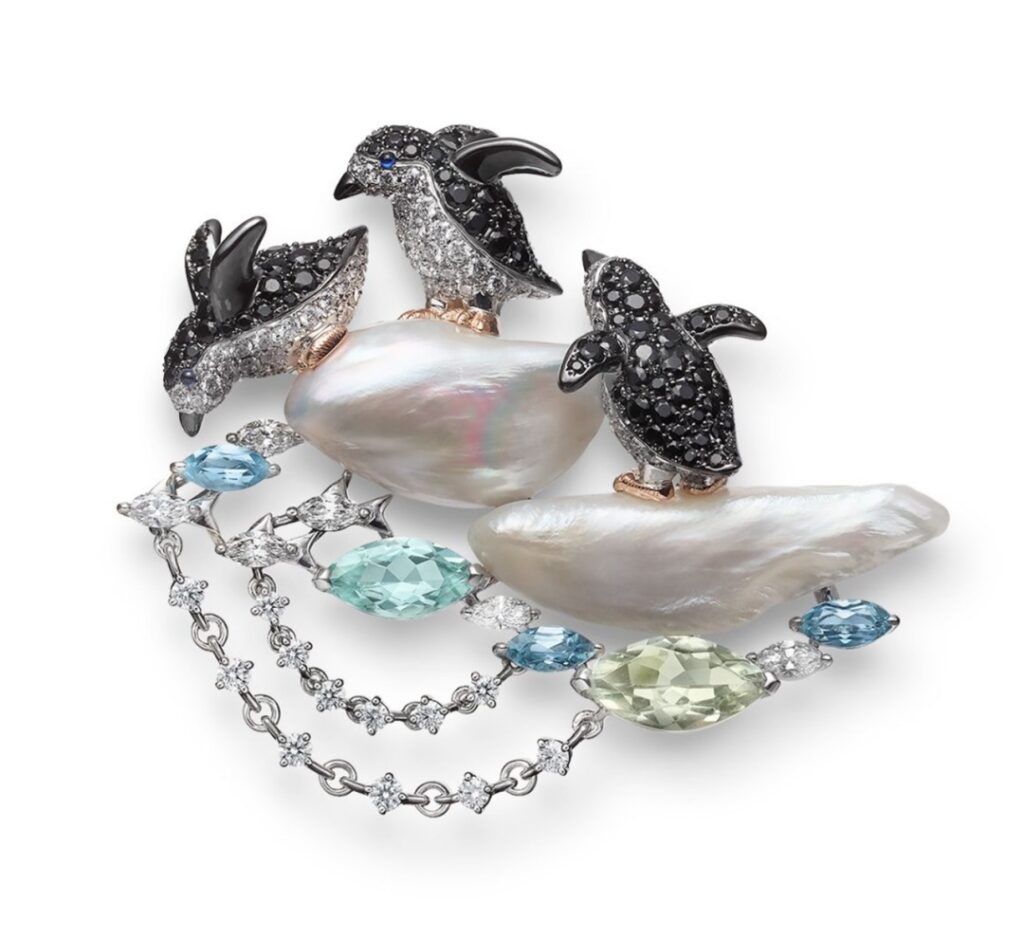
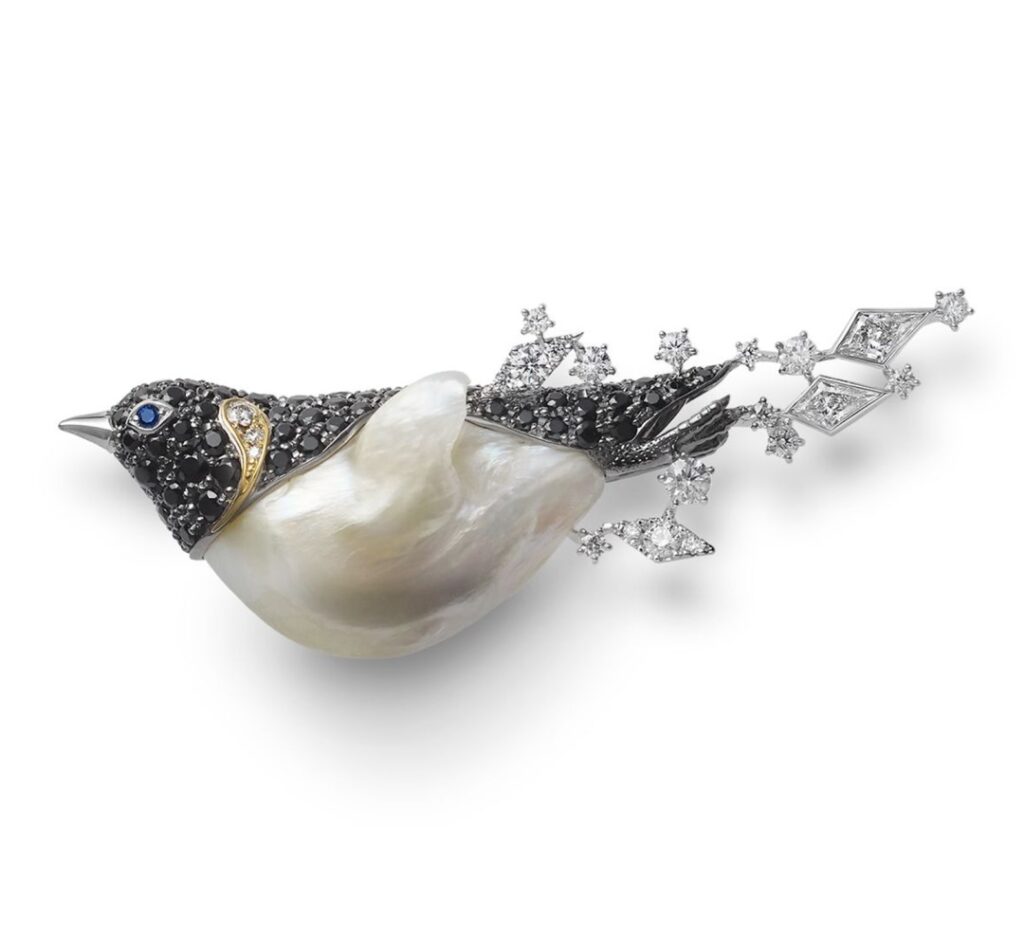
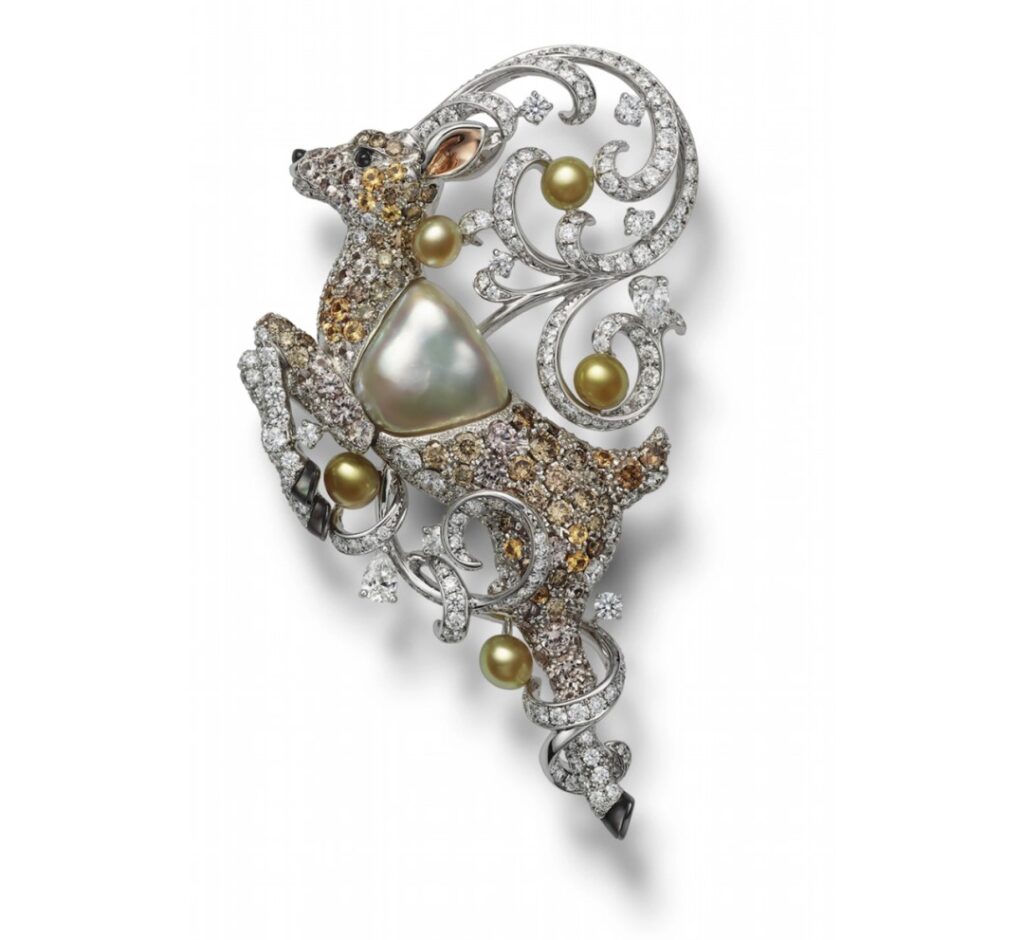
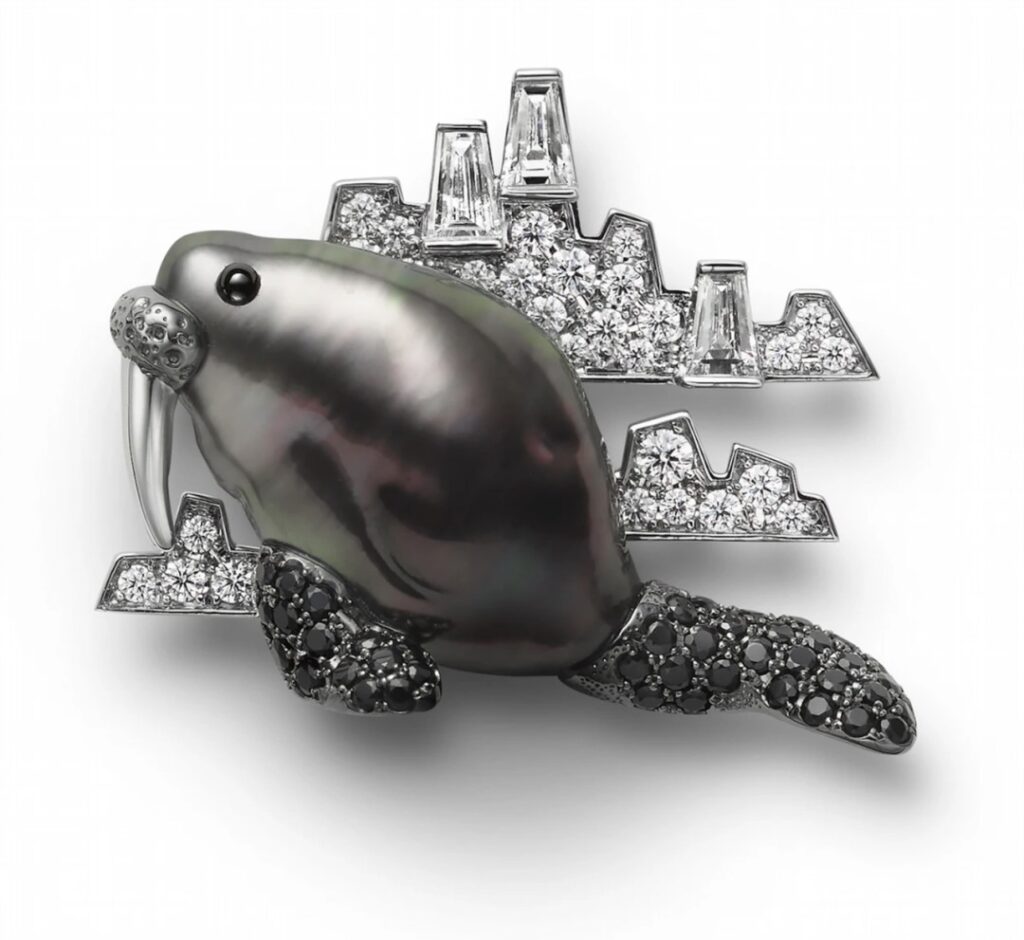
Wild and Wonderful high jewelry collection
Another Japanese pearl brand, Tasaki, takes a completely different approach to baroque pearls. Their collaborating chief designer, Melanie Georgacopoulos, is known for her unconventional style. Her designs are extremely simple, yet the presentation is striking. She created two series for Tasaki using baroque pearls. One sets gold beads on South Sea baroque pearls, aiming for a “don’t mess with me” effect.
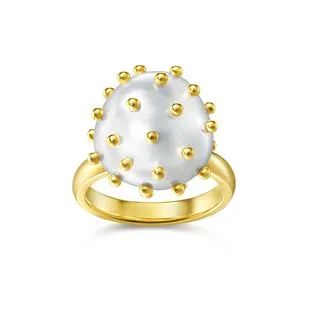
Baroque Drops collection ring
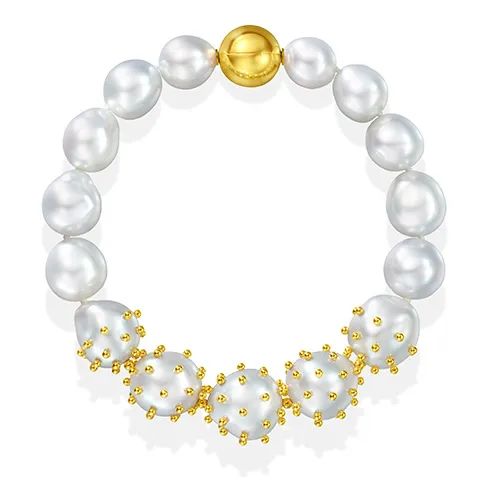
Baroque Drops collection bracelet
The other pairs baroque pearls with various geometrically shaped colored gemstones. Regardless of how pastel the colors might be, the angular gemstones mixed with irregular baroque pearls exude a cool, aloof “tsundere” feel.
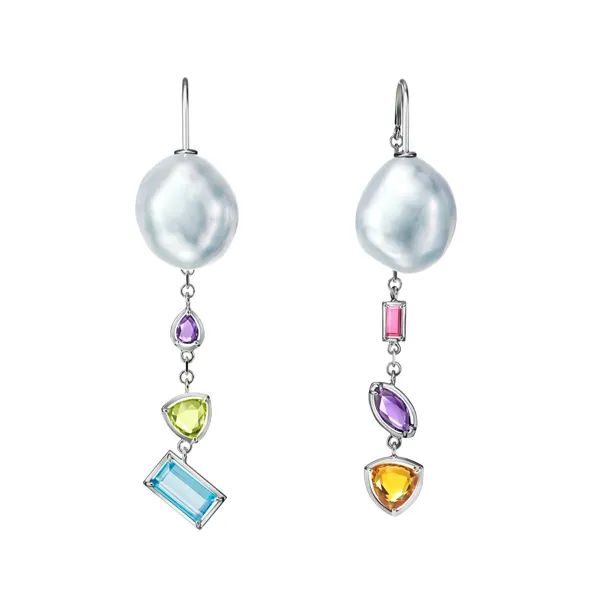
Baroque Pearls collection earrings
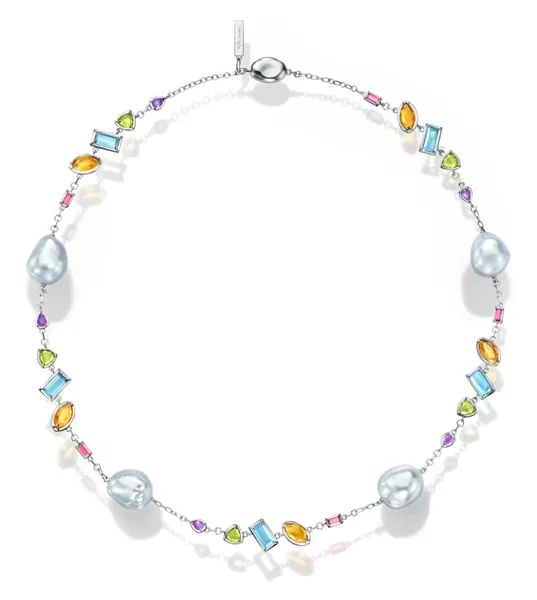
Baroque Pearls collection necklace
Besides professional pearl players, Tiffany & Co. has also shown enthusiasm for pearls in recent years. Perhaps the catalyst was the Bird on a Pearl capsule collection launched in 2023. This outstanding work was created to pay homage to Jean Schlumberger’s classic “Bird on a Rock” after acquiring extraordinary natural Persian Gulf pearls from Mr. Hussein Al Fardan’s private collection.
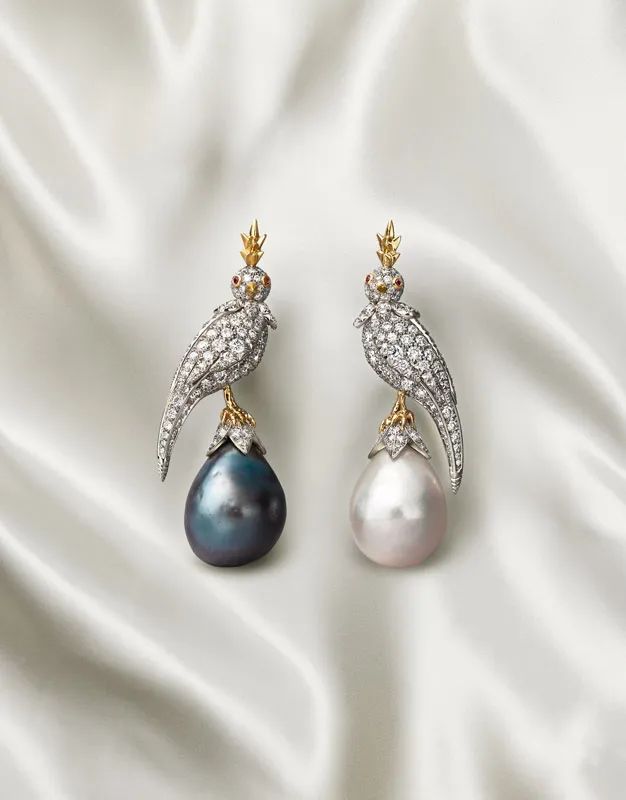
Bird on a Pearl earrings
Baroque natural saltwater white and dark gray pearls

Bird on a Pearl necklace
Baroque natural saltwater white pearl
Weighing over 26 carats
This renowned Qatari pearl connoisseur and avid collector of Persian Gulf pearls possesses an enviable collection of natural saltwater pearls. Each one is unique and rare, with top-tier quality in size, color, and luster, and almost flawless.
Such “ceiling-level” natural saltwater pearls can probably only be seen in royal heritage treasuries nowadays. This is why Tiffany & Co. could present such a special capsule collection, as it’s certainly limited edition, with each pearl being priceless.
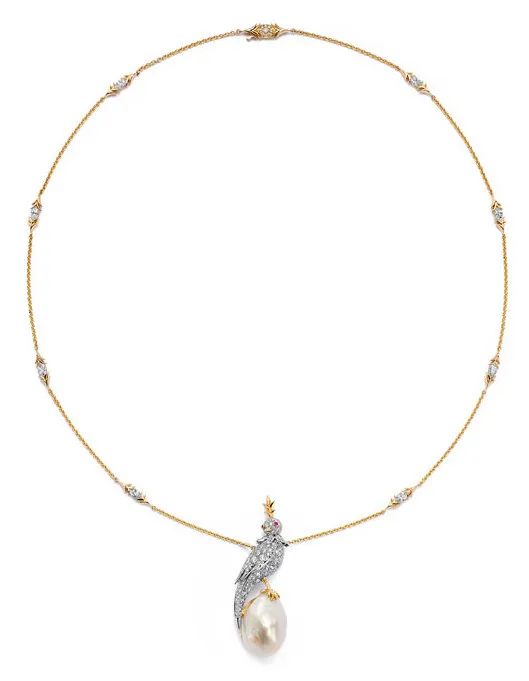
Bird on a Pearl necklace
Baroque natural saltwater pearl
Weighing over 30 carats
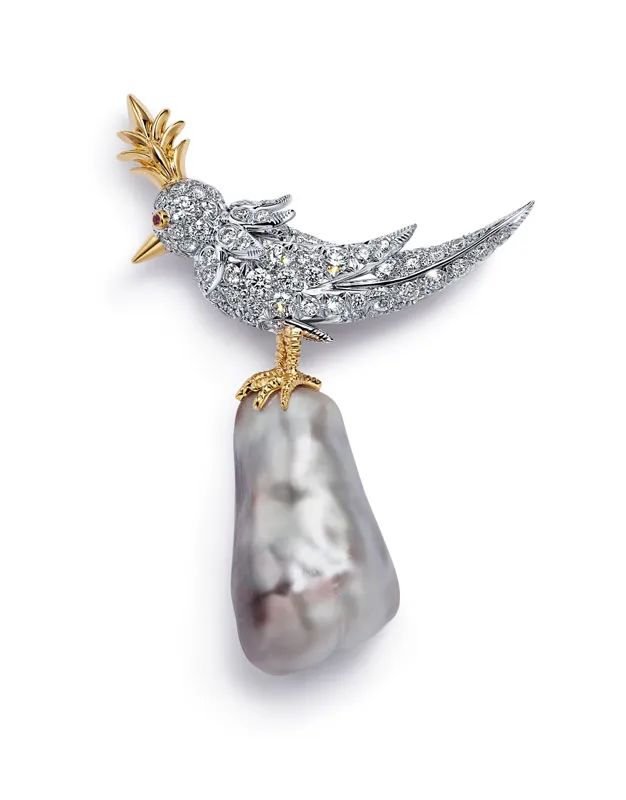
Bird on a Pearl brooch
Baroque natural saltwater silver-orange-brown pearl
Weighing over 35 carats
Of course, besides long-established luxury jewelry brands, many independent jewelry designers also adore the irregular shapes of baroque pearls. In their eyes, this irregularity is an excellent choice for breaking conventional norms.
For instance, Alessio Boschi and Lydia Courteille, both known for their fantastical styles, follow a “free-form” approach, creating various lifelike creatures based on the different shapes of baroque pearls. However, the former brings a dreamy, fairy-tale quality, while the latter embodies mysterious and seductive legends.
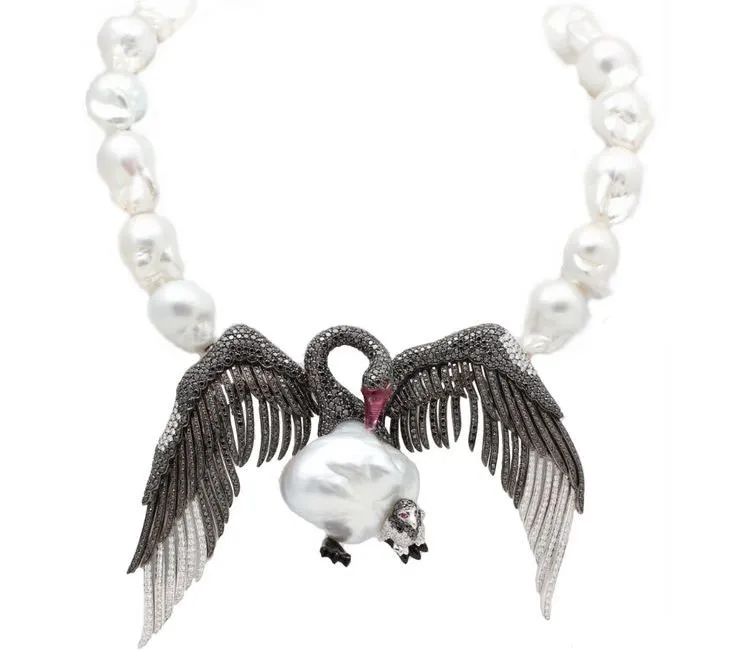

Lucifer Vir Honestus and K Brunini both favor abstractionism. They use baroque pearls to create a special sculptural effect, employing different metal textures to complement the unique tones and shapes of the baroque pearls.


German jewelry designer German Kabirski also leans towards abstract style, but his specialty lies in unusual materials. He combines diamonds with pebbles, precious metals with fur and feathers, and sets gems in ways people couldn’t imagine. So his preference for baroque pearls is a natural choice.
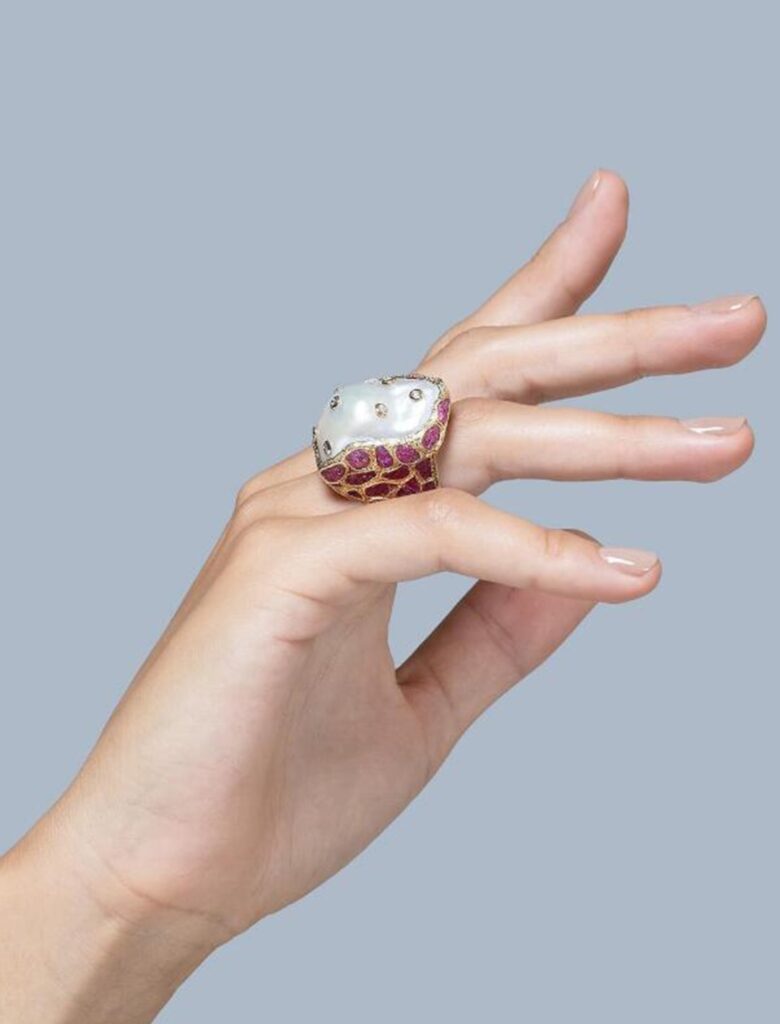

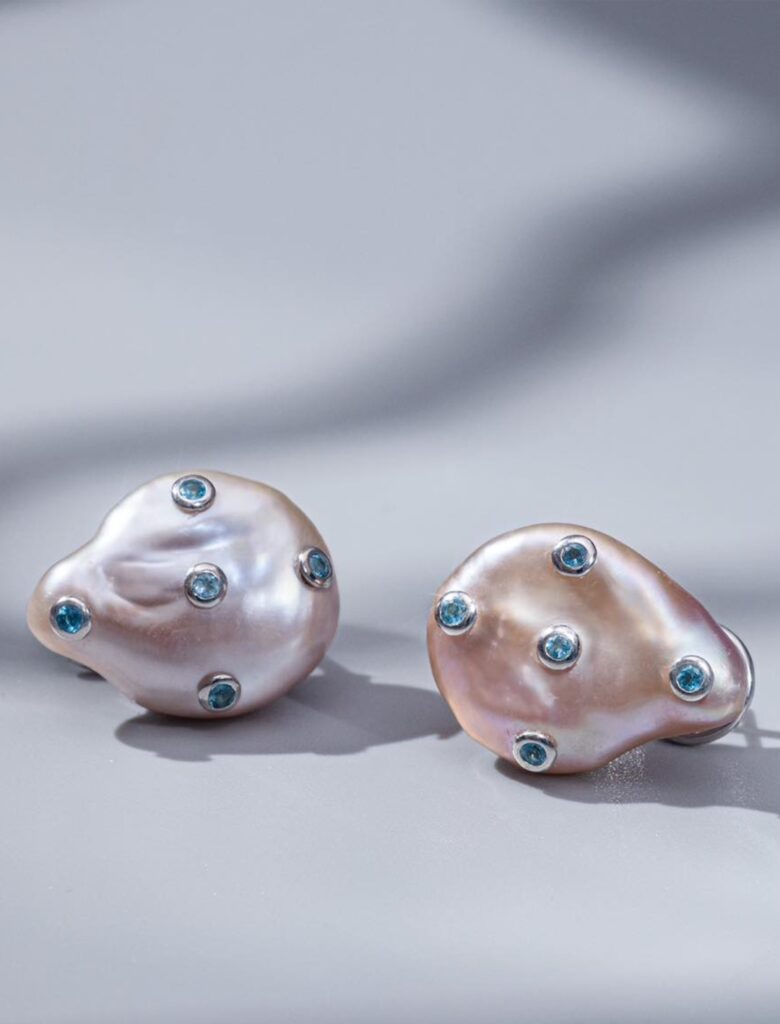
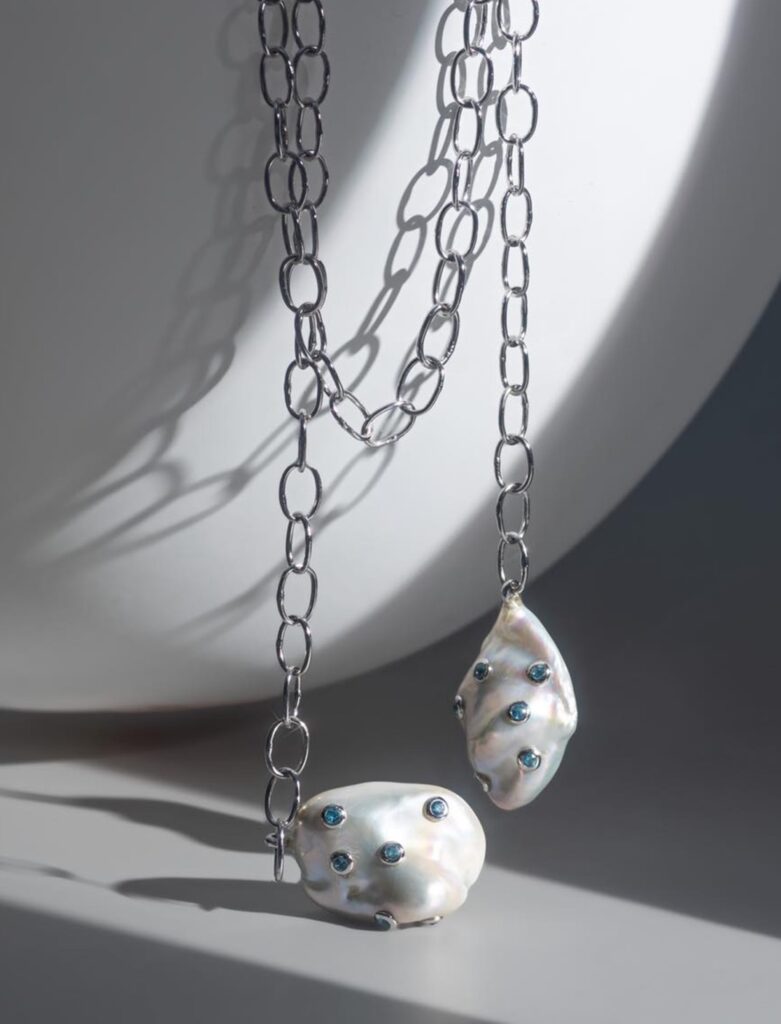
Although his jewelry adopts abstract forms, it carries an antique beauty. Metals, gems, and baroque pearls of various shapes create contrasting yet harmonious effects. Sometimes you might feel he’s using dark metals and elegant pearl tones to create natural light and shadow effects, minimalist yet worthy of careful appreciation.


Of course, when discussing baroque pearls, one cannot overlook Margot McKinney. This Australian female designer has a deep love for color. She adores pairing various vibrant pavé-set colored gemstones with large South Sea baroque pearls to create strong visual impacts.


Margot McKinney’s works are full of presence. She believes that vibrant colors and irregular shapes are the best weapons to soften the serious, traditional feel of high jewelry. To break conventions and shape personal style requires this kind of bold, out-of-the-box visual effect. Therefore, her works are also the best choice for Statement Jewelry.

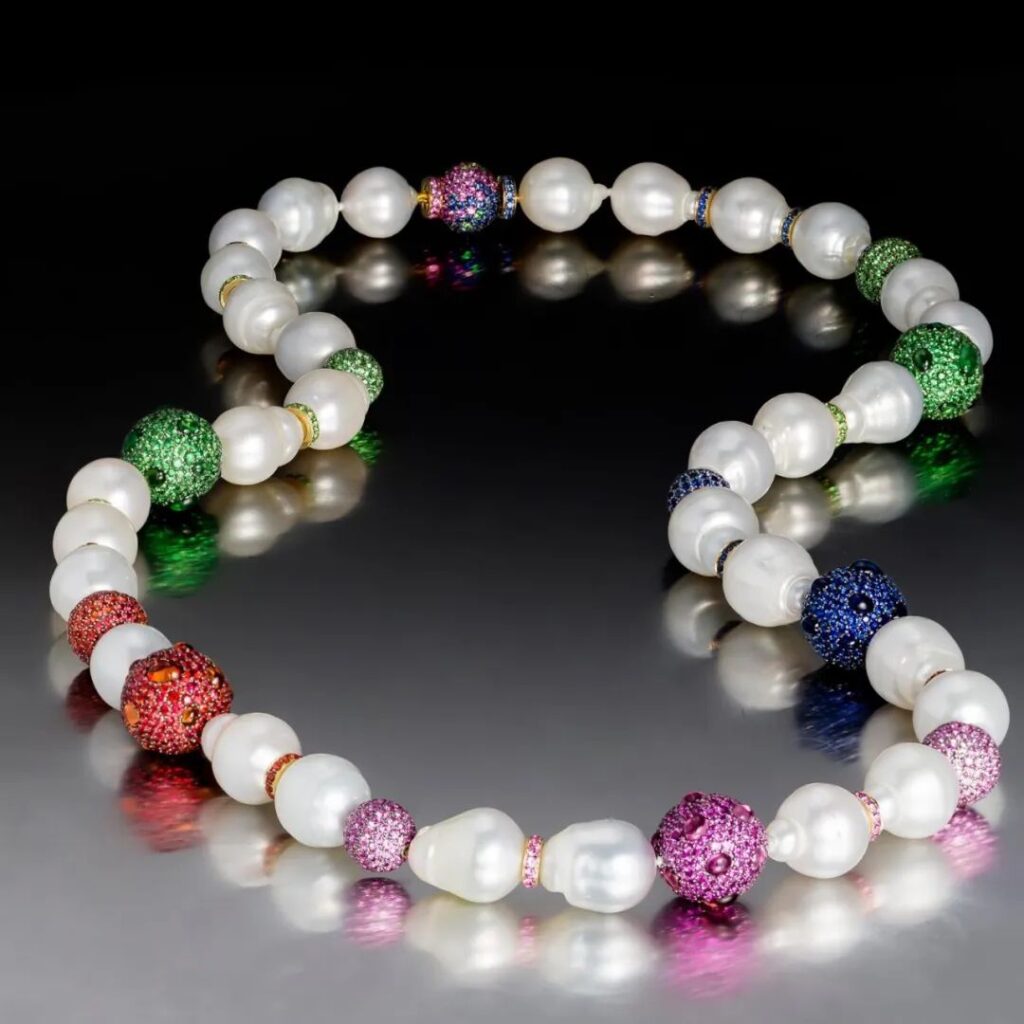
So, are you considering getting a baroque pearl design this June? This is the pearl choice with the most diverse styles and excellent value for money. Not to mention it’s now highly praised by celebrity icons as the “trending hit.” What are you waiting for? The earlier you wear it, the more fashionable you’ll be!
Unleash Your Uniqueness: Baroque Pearls – The Edgy Twist to Classic Elegance
Tweet
Further Reading
